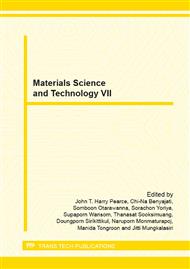p.182
p.188
p.193
p.197
p.211
p.219
p.225
p.230
p.236
Optimization of Induction Brazing Parameters for Stellite Strip of Steam Turbine Blade Using Taguchi-Neural Network
Abstract:
To repair the damaged of steam turbine blades, the method of increasing wear resistance of the blade leading edge with brazing of stellite plates by induction heating has been addressed in this work. Induction brazing of a Cobalt-based alloy to SUS410Cb steam turbine blades in an electrical power plant has been carried out. Ag-Cu-Zn based material was chosen to be the filler metal sandwiched between the stellite strip and the turbine blade. In order to cope with the large size of blades, an automatic brazing process which used moving induction coils has been developed. In the proposed brazing process, there are three parameters that significantly affect the quality of the brazing joints including coil distance, moving coil speed, and power of induction heating. In this work, the optimum choice of brazing parameters is obtained by using a Taguchi-neural network technique. According to the results of our previous work, it is recommended to attain the temperature distribution at around 750°C for maximum strength and good quality brazing in the brazed components. The objective for the evaluation of brazing quality is therefore a function of this temperature and defined as the temperature deviation from the best brazing temperature. The design is verified and confirmed by the manufacturing of brazed joint applying suggested parameters. The experimental results showed that the Taguchi-Neural network method resulted in a better brazed quality than when using only the Taguchi method.
Info:
Periodical:
Pages:
225-229
Citation:
Online since:
March 2013
Authors:
Keywords:
Price:
Сopyright:
© 2013 Trans Tech Publications Ltd. All Rights Reserved
Share:
Citation:


